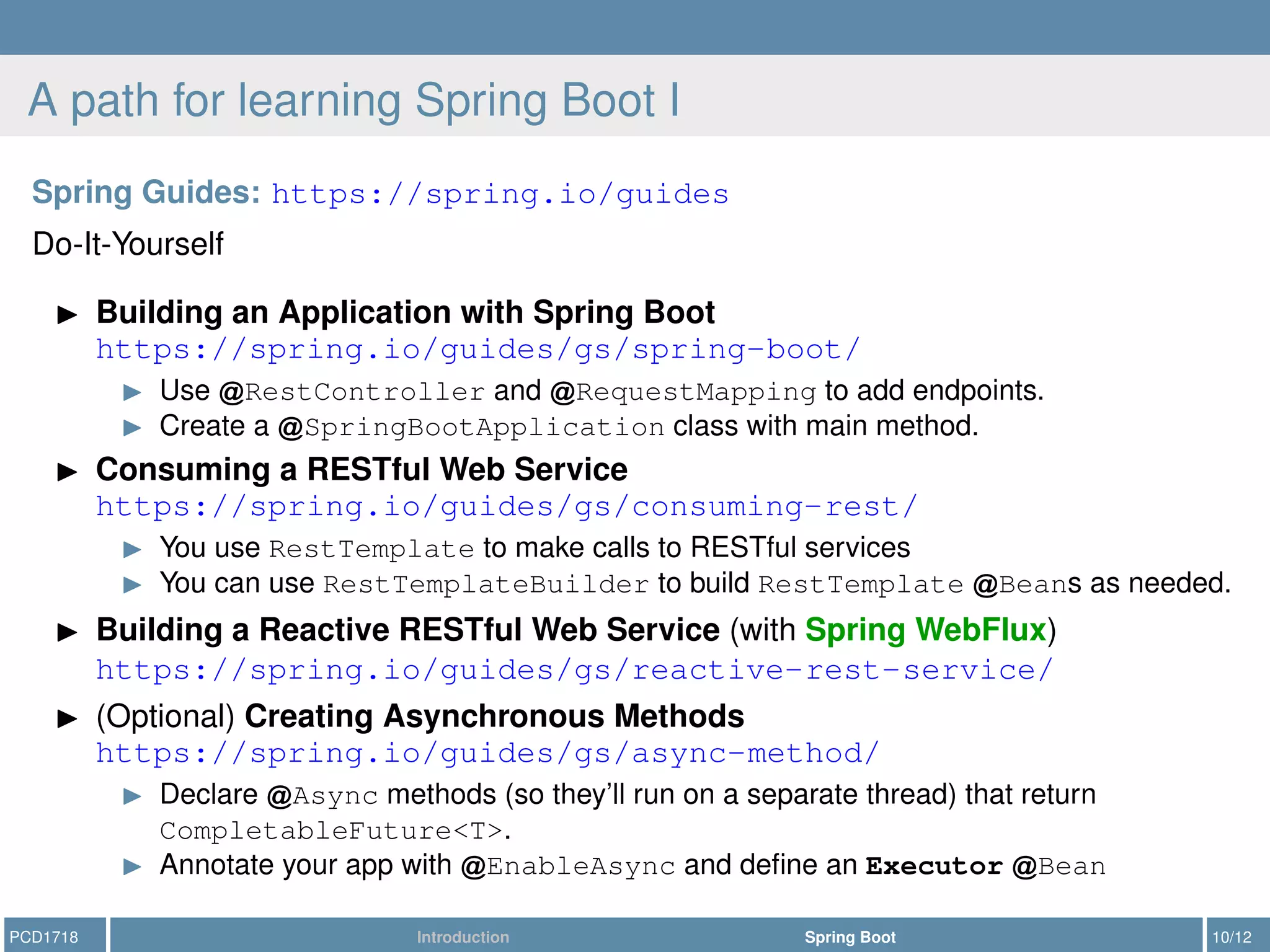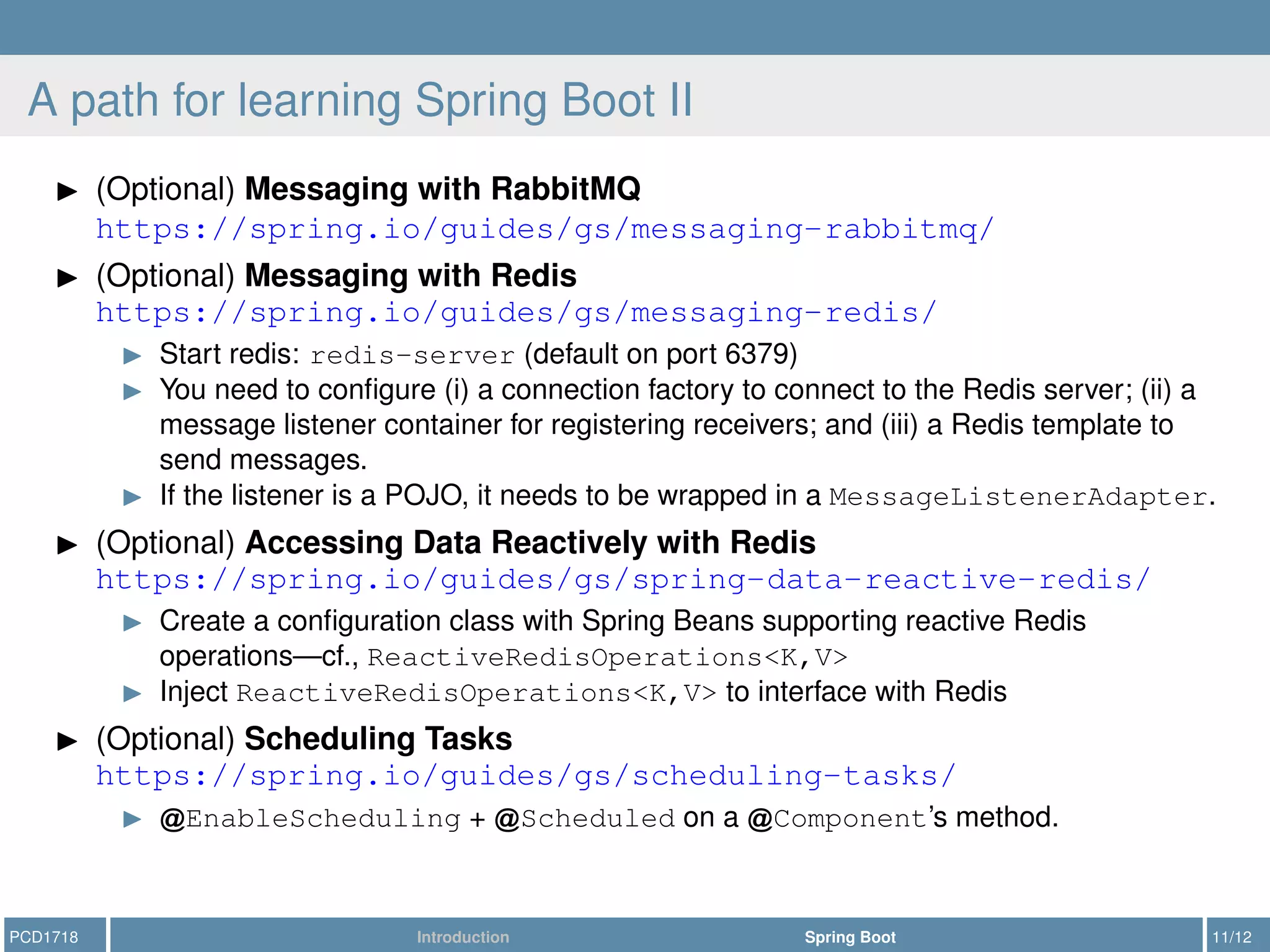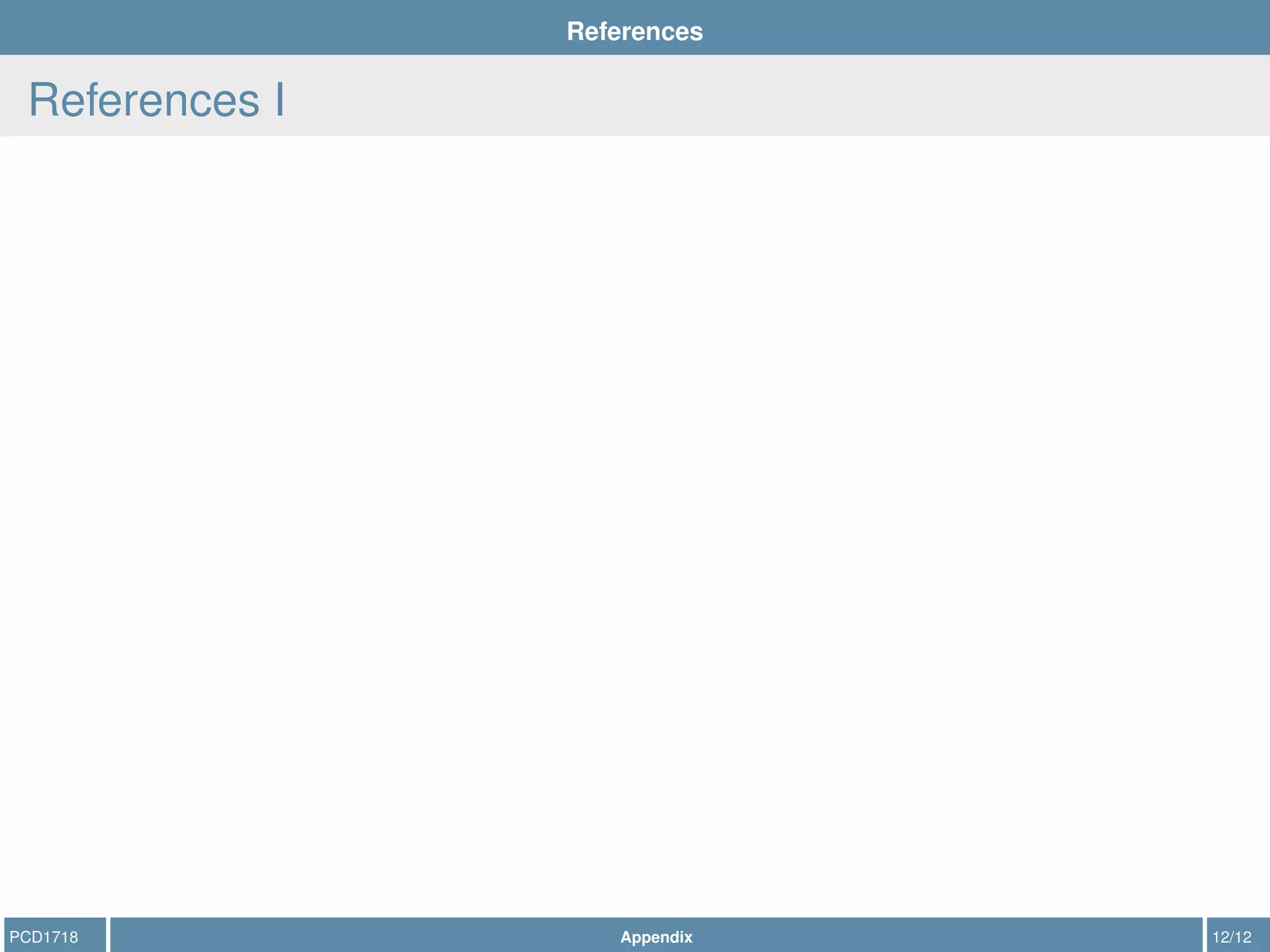This document provides an introduction and overview of Spring and Spring Boot frameworks. It discusses that Spring is an open-source framework that makes it easy to create Java-based enterprise applications. Spring Boot makes it easy to create production-grade Spring applications that can be "just run". The document outlines some of Spring's core features like the inversion of control container and aspect-oriented programming support. It also discusses Spring Boot's opinionated approach and how it abstracts common microservices tasks.
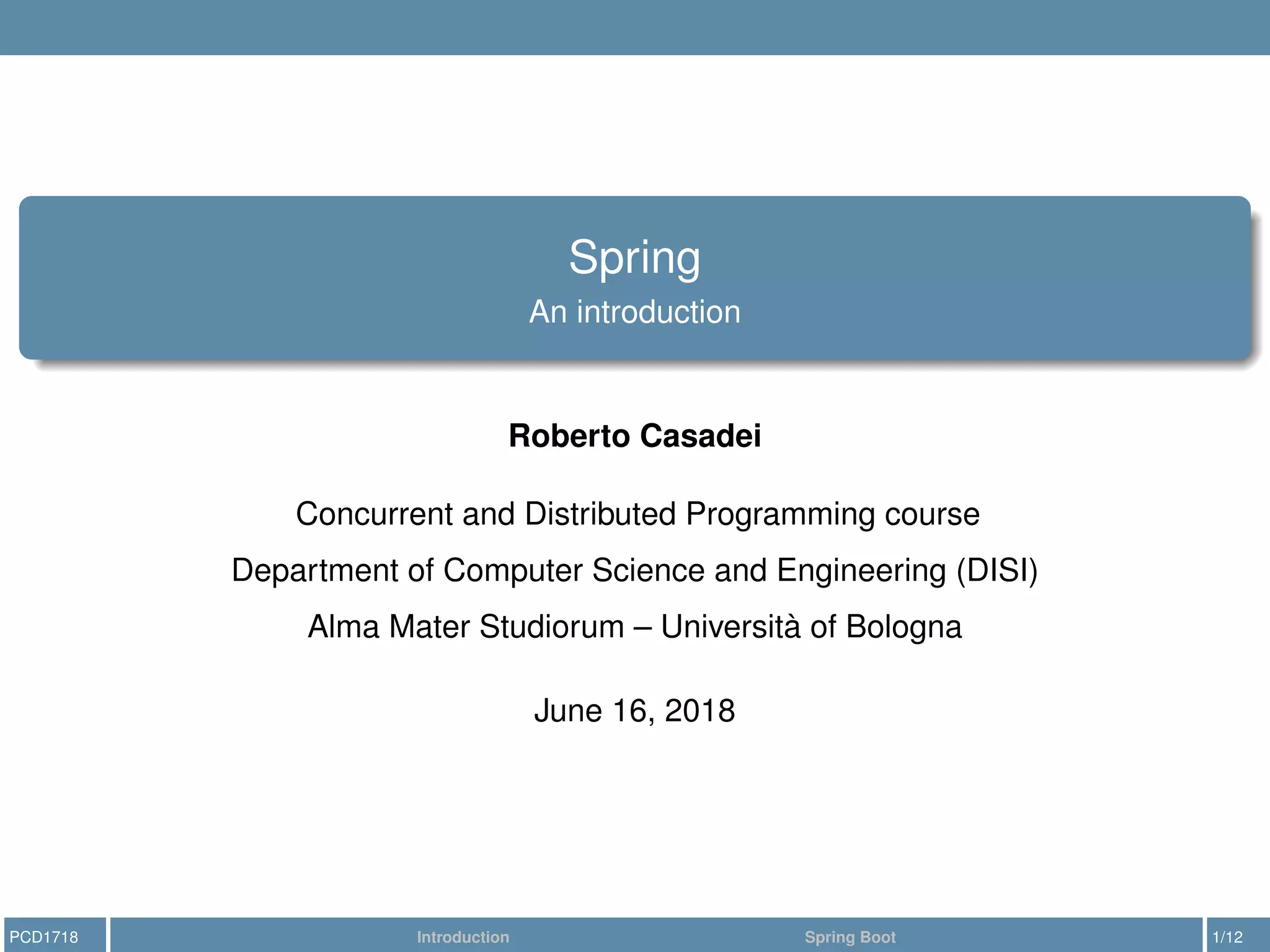
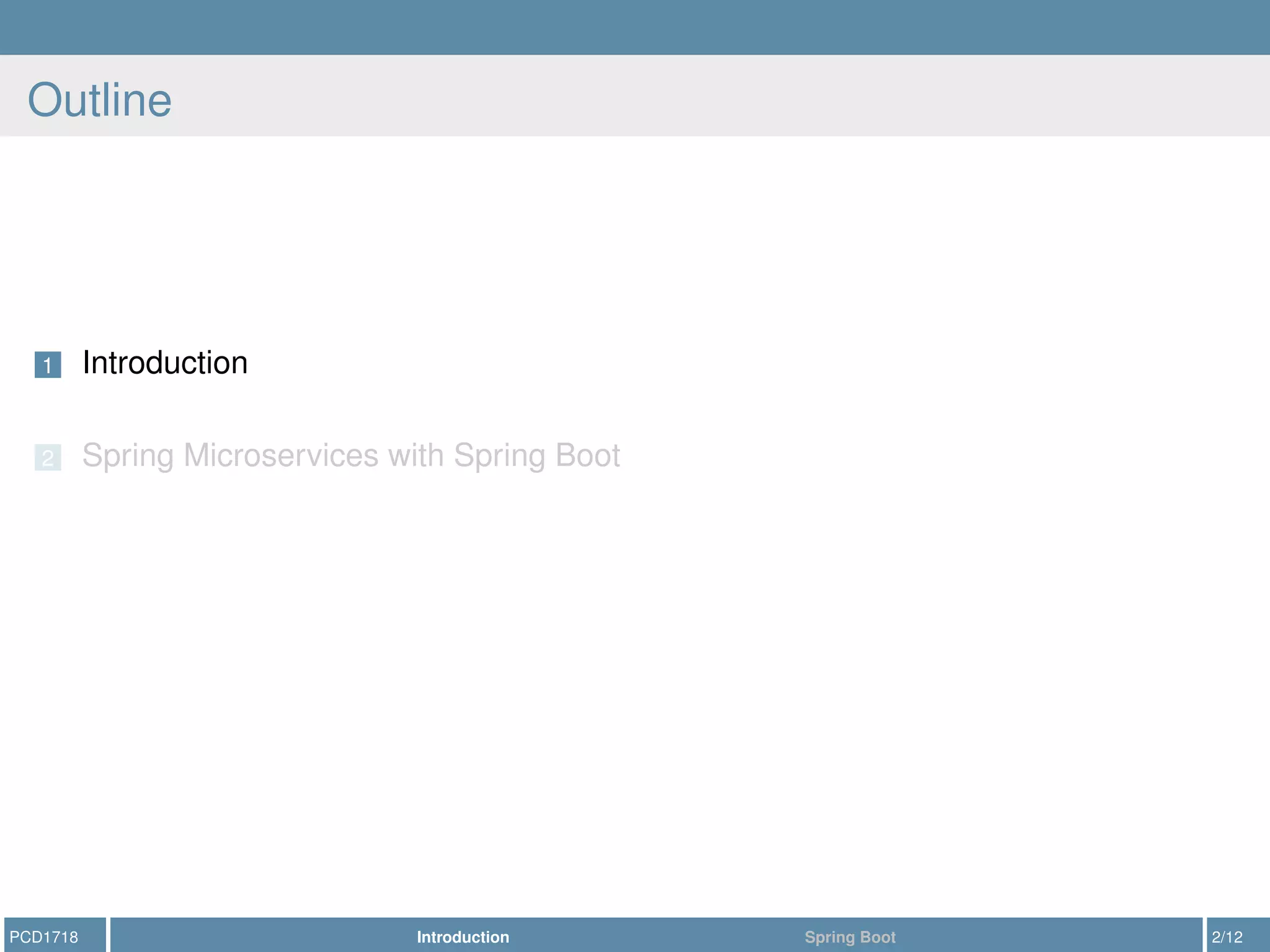
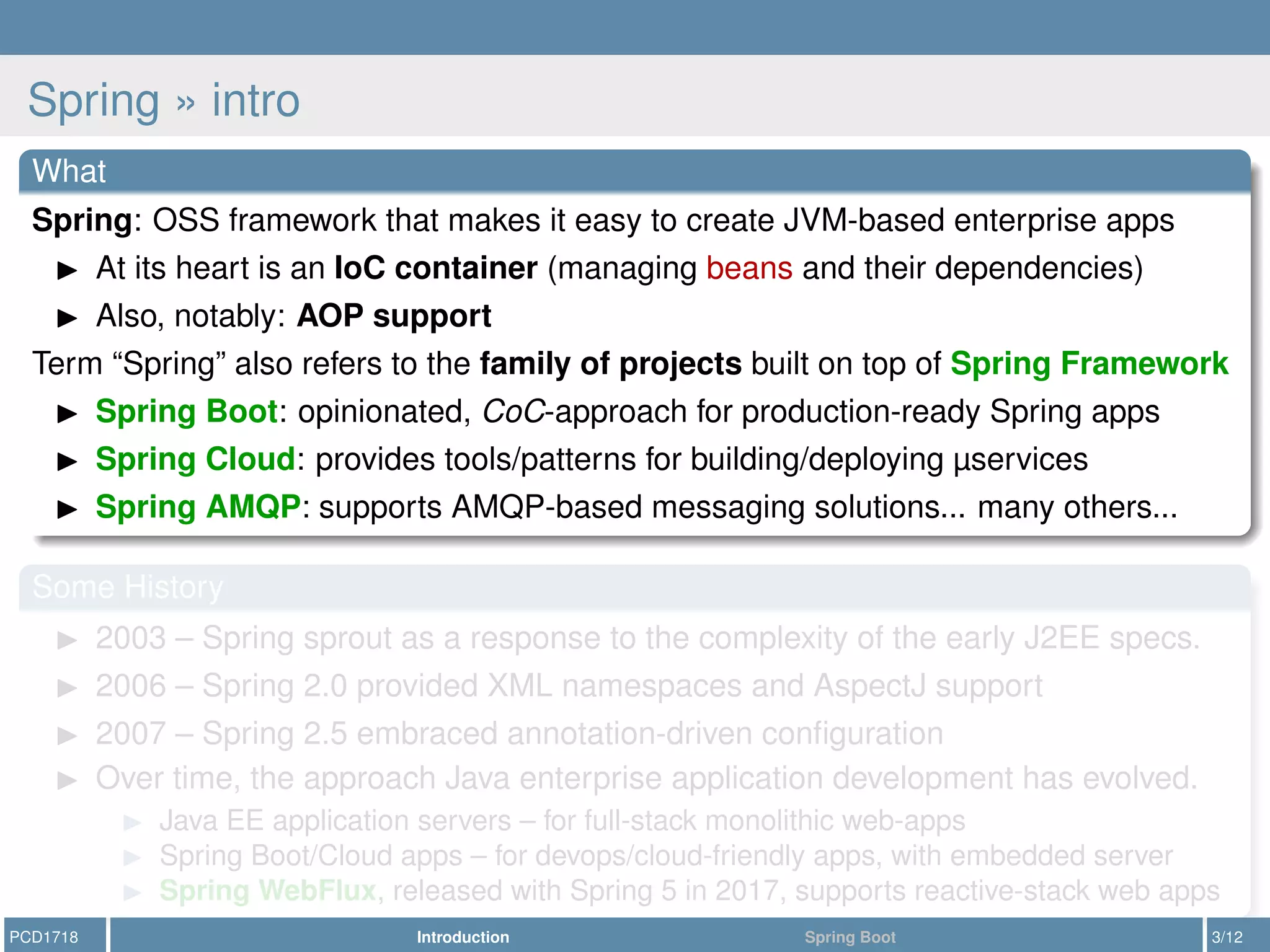
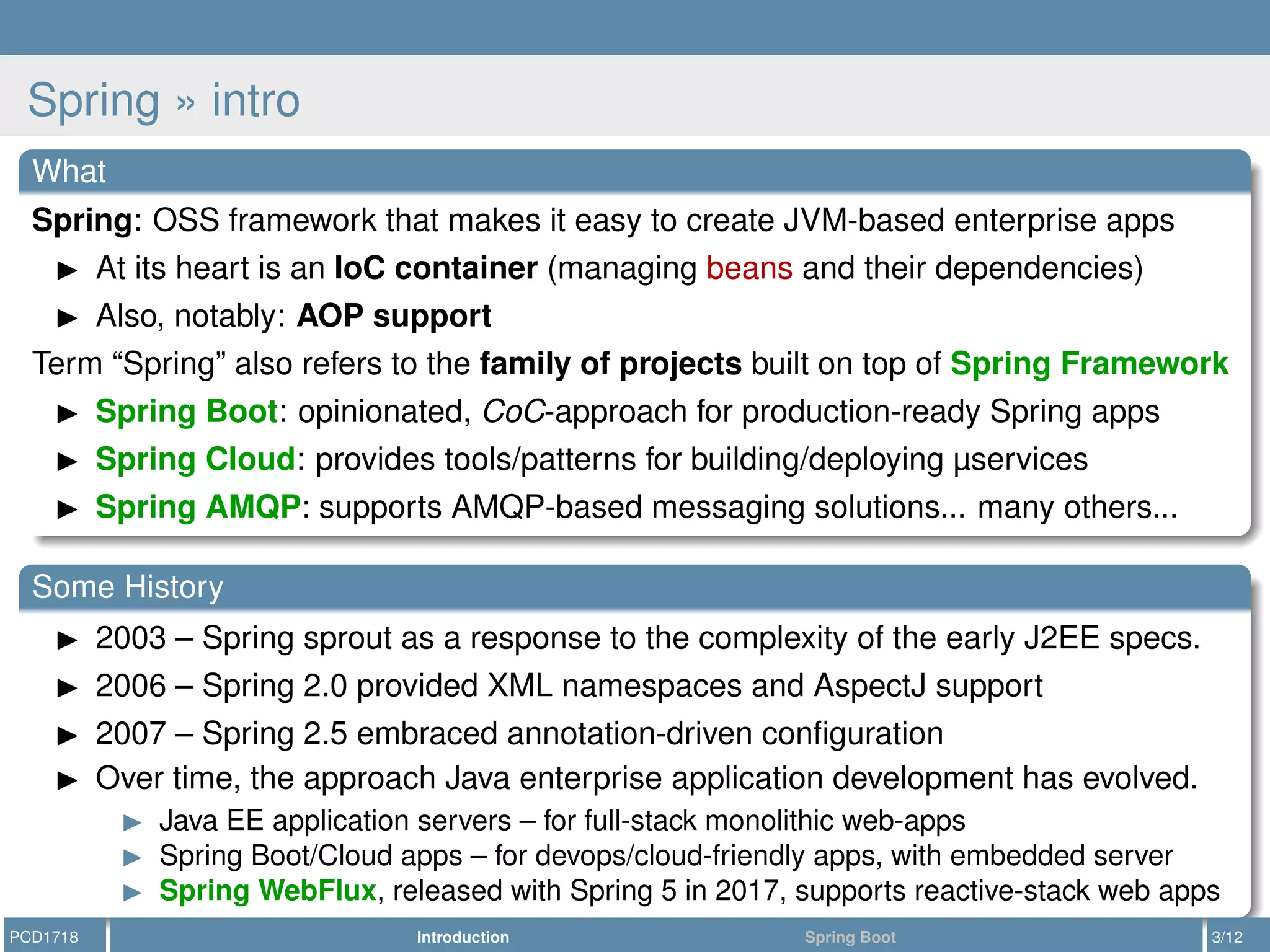
![Spring » beans and wiring I
(Spring) Bean: application object managed by the Spring IoC container
Configuration metadata tells the Spring container how instantiate, configure,
and assemble the objects in your application.
a) XML-based metadata
b) Java-based configuration
Java-based container configuration
Factory methods in Configuration classes can be annotated with Bean
Configuration public class AppConfig {
Bean public MyService myService() { return new MyServiceImpl(); }
public static void main(String[] args) {
ApplicationContext ctx =
new AnnotationConfigApplicationContext(AppConfig.class);
MyService myService = ctx.getBean(MyService.class);
myService.doStuff();
} }
PCD1718 Introduction Spring Boot 4/12](https://image.slidesharecdn.com/pcd1718-slides-spring-180616092247/75/Spring-Boot-a-Quick-Introduction-5-2048.jpg)
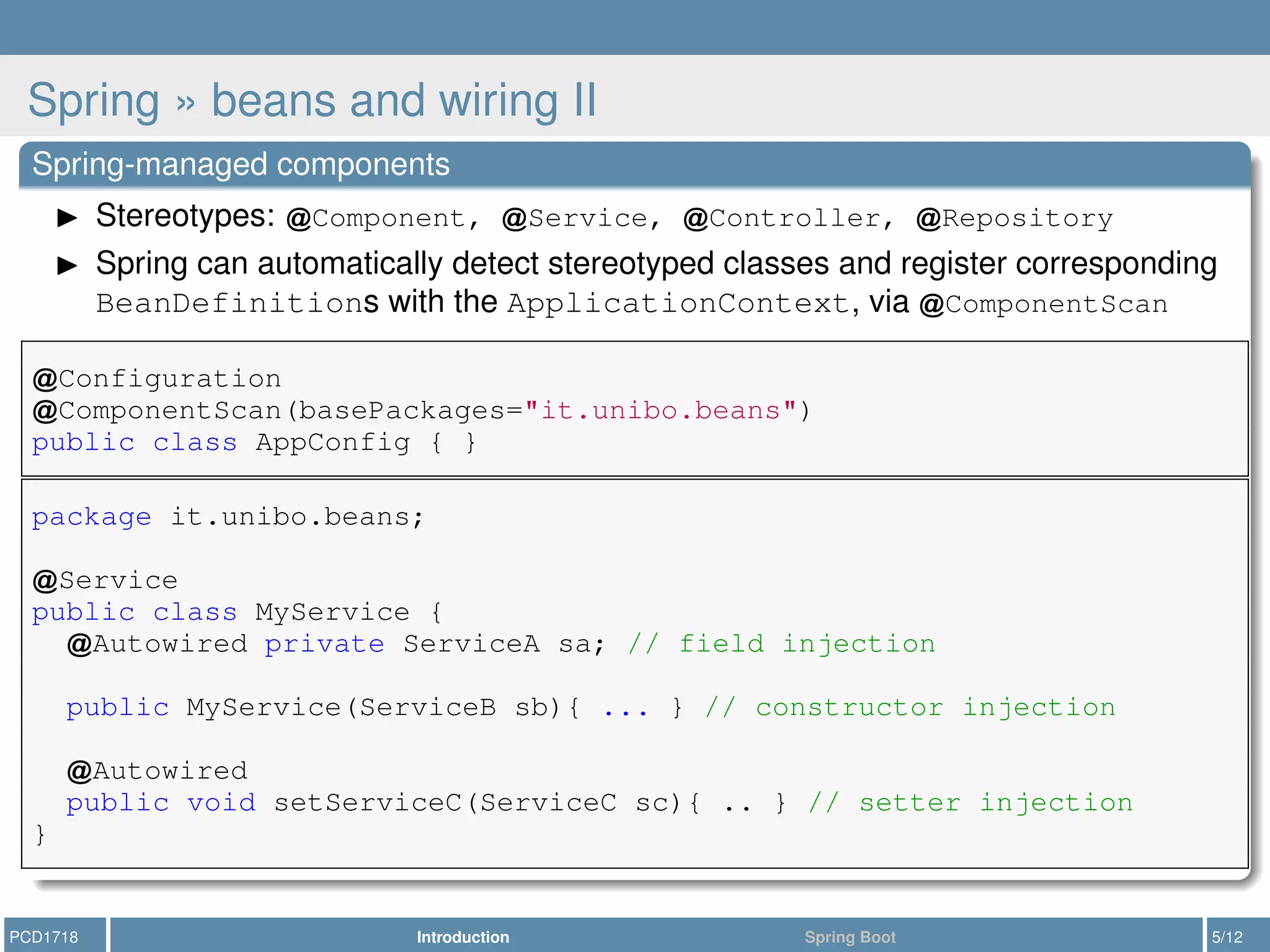
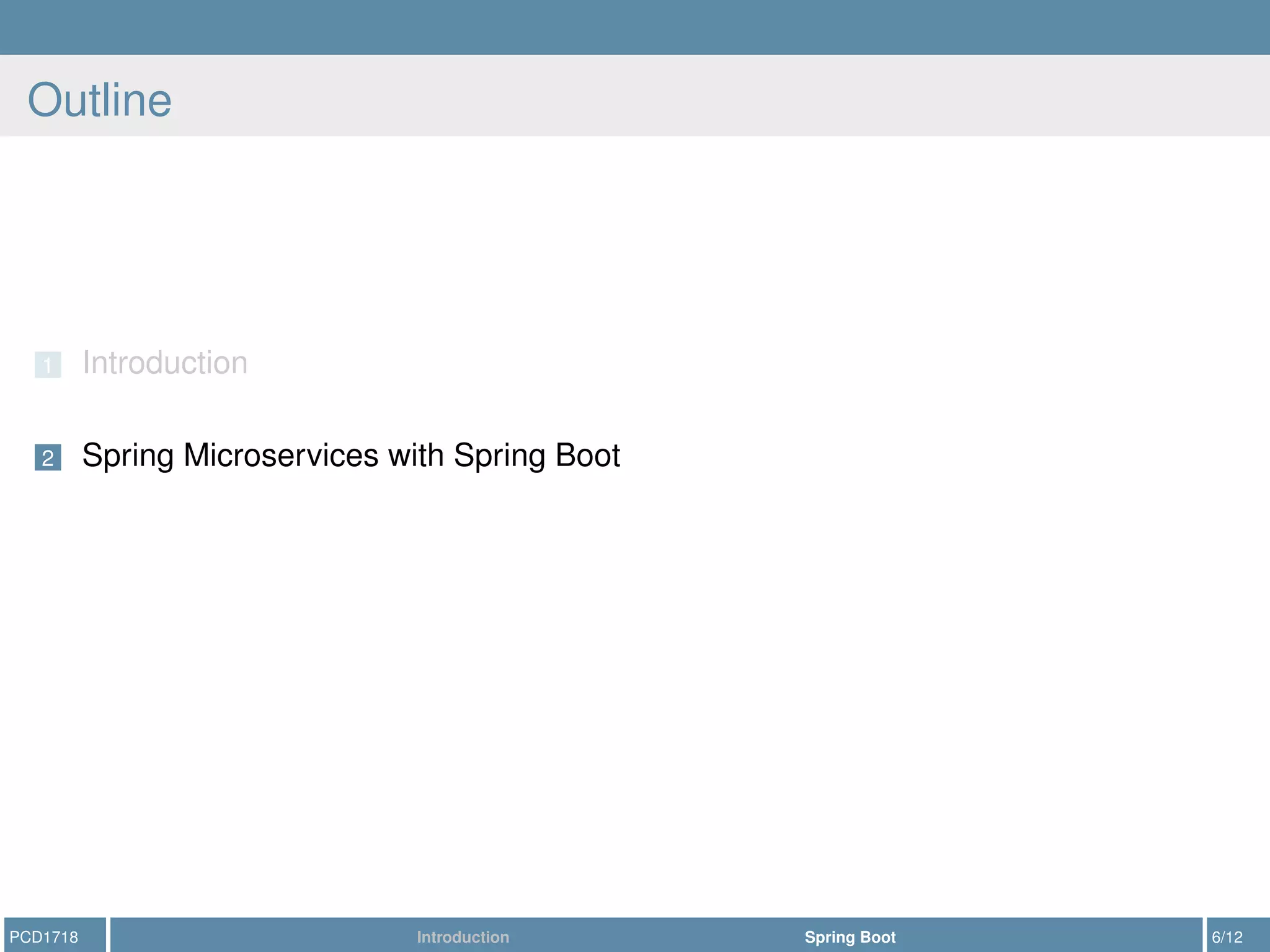
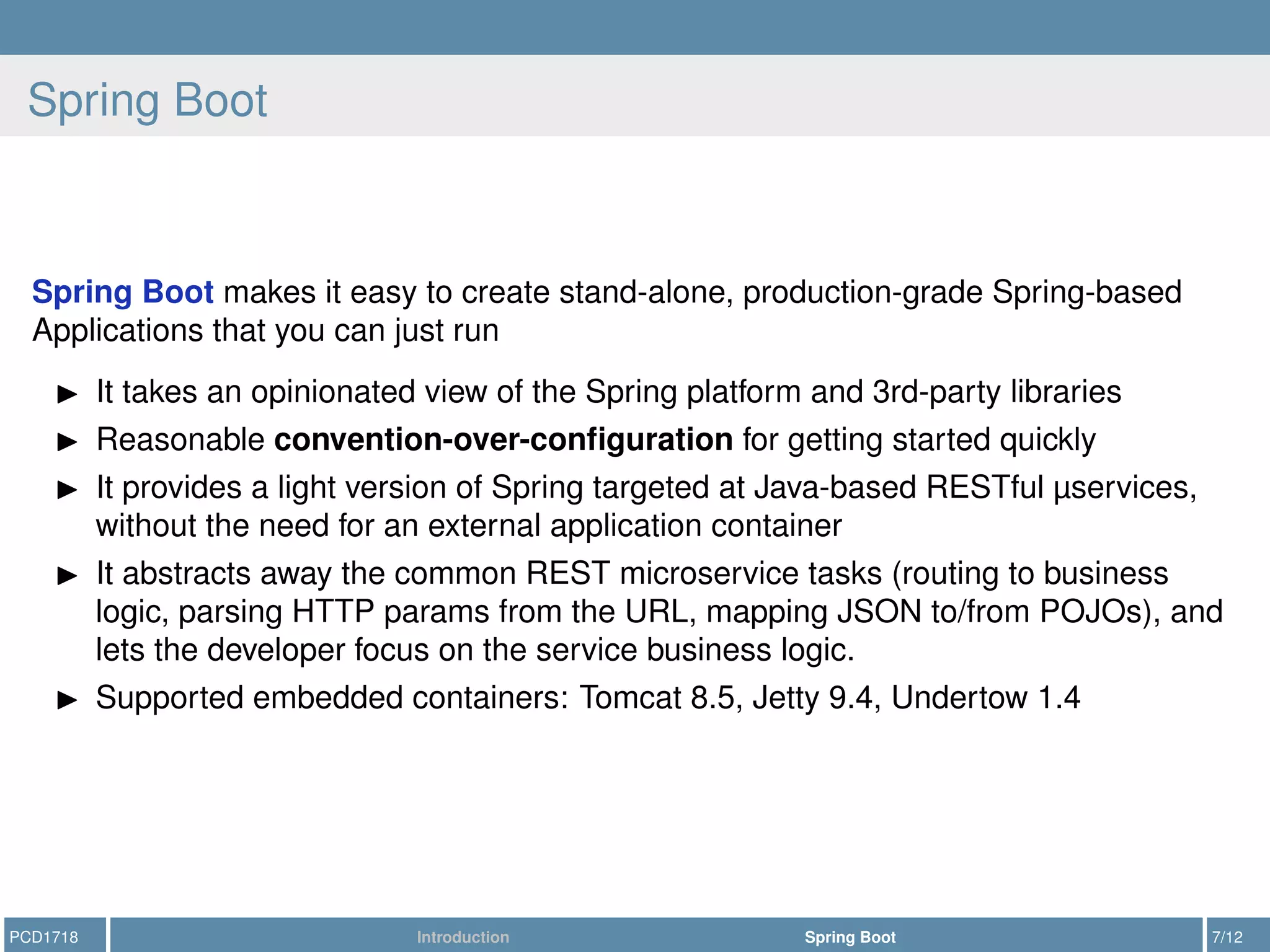
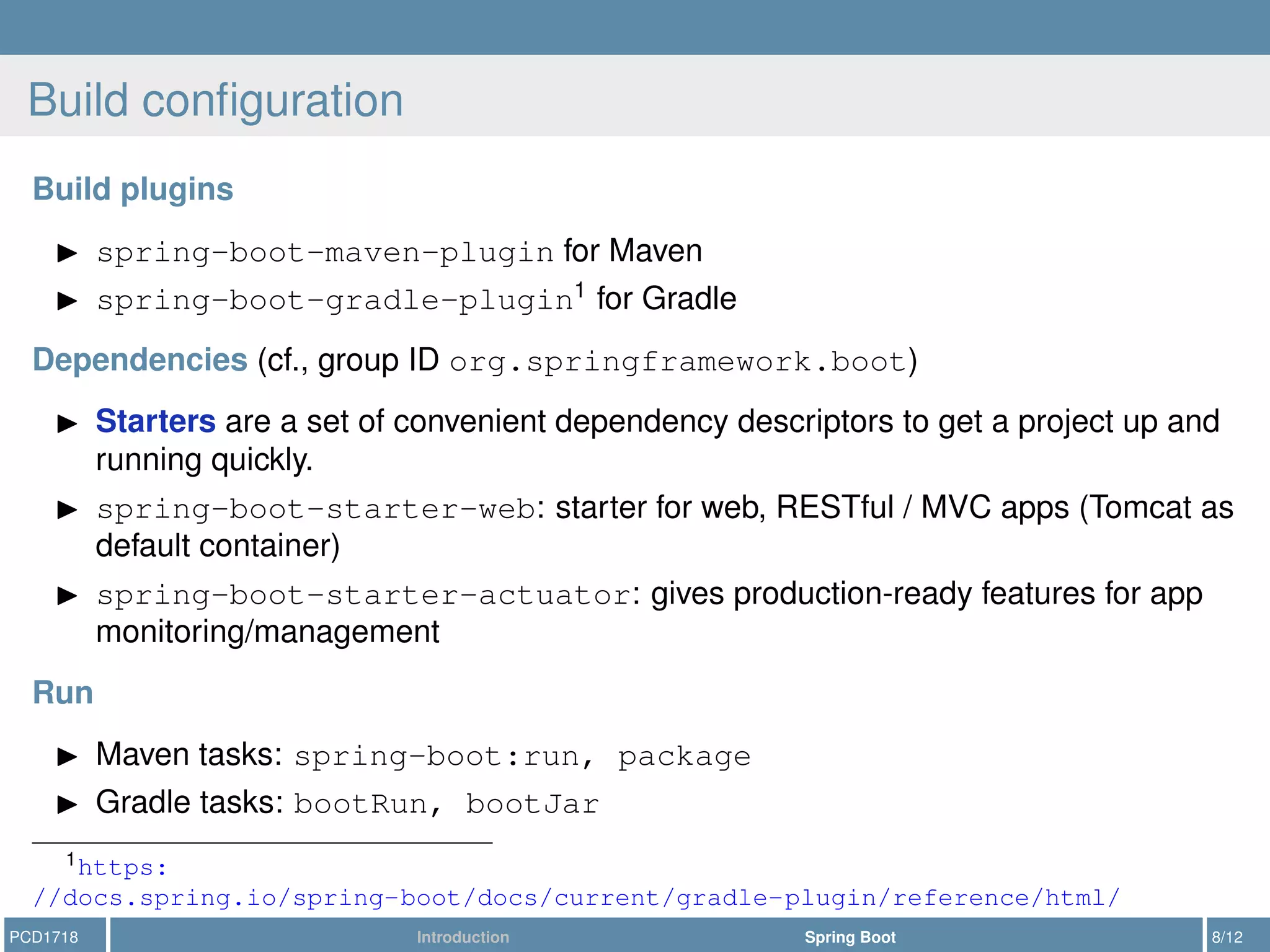
![Hello Spring Boot
SpringBootApplication // tells Boot this is the bootstrap class
public class MyApp {
public static void main(String[] args){
SpringApplication.run(MyApp.class, args);
}
}
SpringBootApplication also implies
– EnableAutoConfiguration: tells Spring Boot to "guess" config by classpath
– ComponentScan: tells Spring to look for components
RestController RequestMapping(value="/app")
public class MyController {
RequestMapping(value="/hello/{name}", method = RequestMethod.GET)
public String hello( PathVariable("name") String name){
return "Hello, " + name;
}
}
Endpoint: http://localhost:8080/app/hello/Boot
Actuator also exposes http://localhost:8080/actuator/health
PCD1718 Introduction Spring Boot 9/12](https://image.slidesharecdn.com/pcd1718-slides-spring-180616092247/75/Spring-Boot-a-Quick-Introduction-10-2048.jpg)
